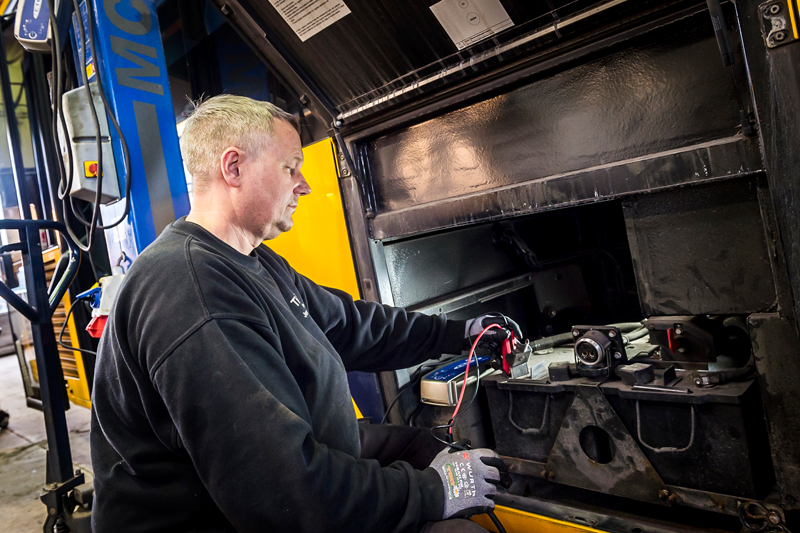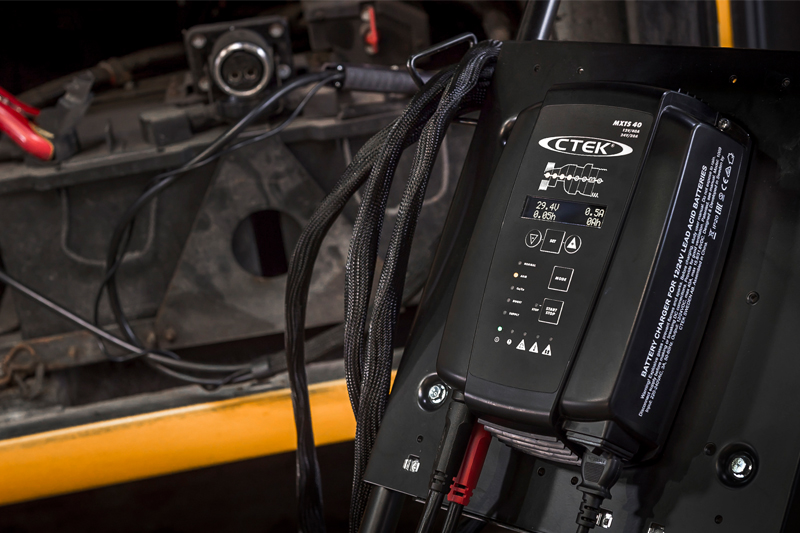
The performance and lifespan of lead acid batteries are seriously inhibited when exposed to extreme temperatures, and as a result, effective battery management during winter servicing is essential. CTEK explores the issue.
Despite the advances in battery technology and ECU-controlled charging to help cope with modern vehicle demands, battery related faults remains in the top five causes of breakdown for commercial vehicles. If you own or operate a fleet of vehicles, the thought of the onset of winter and the potential breakdown problems and associated costs may lead to some sleepless nights. However, taking a few simple steps in proactive battery maintenance can help to avoid these problems, in order to increase fleet reliability and reduce the costs associated with breakdowns.
A few basic battery facts:
-
- At close to 0°C, a lead acid battery loses around 20% of its capacity, whilst at -30°C it loses around 50% of its capacity (dependant on age and condition). This is due to the whole chemical reaction process within the battery slowing down, leading to reduced power output.
- Because low temperature affects the chemical reaction, this means even when the vehicle is running the battery’s ability to accept charge drops.
- If a battery is in a low state of charge during extreme weather, it can easily freeze, which can be very dangerous if attempting a ‘jump’ start. Because of the low state of charge, the specific gravity of the electrolyte within the battery is reduced, so it becomes more like water and freezes more easily.
- Many commercial vehicles, such as buses and delivery vehicles, have a driving pattern involving frequent stops and low speeds. Under these conditions the battery will not receive sufficient charge, resulting in a continuously low state of charge. Over time, this will reduce further and result in sulphation, which will cause irreparable damage to the battery plates.
- 85% of all battery failures are due to sulphation. The more active surface area you have on battery plates, the better the output; the sulphation process reduces the active plate area, leading to less power output.
Simply by testing, charging and conditioning batteries on a regular basis, workshops can ensure that vehicles are protected against electrical non-starts and other battery related breakdowns during the cold winter months. CTEK has a fast, safe and effective solution that will enable workshops to regularly charge batteries without having to take the vehicle off the road for long periods of time.

CTEK chargers are powerful, fully automatic switched-mode battery chargers, designed to offer outstanding levels of reliability, safety and efficiency for fleet workshops operating with 12V and 24V systems. They are fully automatic, easy to use and require no specialist knowledge or monitoring – simply connect, forget and carry on with a normal service without worrying about the risk of overcharging and gassing. CTEK battery chargers are compatible with all types of lead acid vehicle batteries, including wet/flooded, calcium, gel, and the latest Start-Stop AGM and EFB technology.
Did you know…
…that the hot summer weather is actually the start of many winter battery problems? The battery can get damaged by high temperatures, and in the case of trucks, it can be because the battery is too close to the exhaust. During the summer, however, the warmth in the surrounding air can help the battery function well – so any drop in condition isn’t picked up. It’s not until the cold weather strikes that you realise you have a problem, so it’s therefore important to regularly check the state of the battery all year round.








